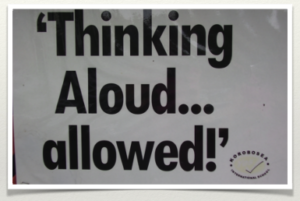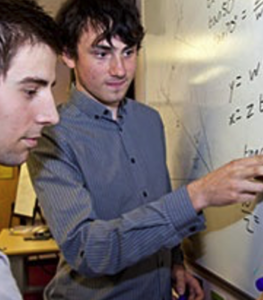Metacognition – thinking about your thinking
Being aware of your own thoughts, strategies, feelings and actions and their effects on others is what metacognition is about. It’s about knowing what you know and don’t know. The ability to take the balcony view, to look down upon yourself and reflect on your behaviour, ask internal questions and develop mental maps and plans of action. Metacognition is also about being aware of your own actions and the effect of these on others and the environment. It is about being able to take conscious steps to reflect and evaluate and make mid-course corrections to improve outcomes. People with developed metacognitive skills are also able to develop mental maps and plans of action.
To improve, grow or get better at a skill or behaviour, you need the ability to stop and reflect on your own process, behaviours and results. Have you ever been teaching, and you hear yourself say, “I need to speed up,” or “I need to slow down,” or “This isn’t working!” According to several studies this is not as common as many of us believe. A significant percentage of the population do not stop and think about their thoughts, actions and outcomes. Have you ever asked a student, “How did you get to that conclusion?” and their reply is, “I don’t know, I just did it!” This shows they may not be internally aware of the steps and processes they are using. To change behaviours, choose a different action or steer your life in a certain direction it requires that ability to think about your thinking.
The great news is, that this is a teachable skill.
Here are some ways to explicitly teach students to be aware of their thinking…
 TAPS: Think Aloud Problem Solving
TAPS: Think Aloud Problem Solving
Invite students to share their thinking aloud as they problem solve. Usually this is conducted with a partner. One person acts as the problem solver, the other as a listener. With each new problem, they switch roles. By thinking aloud students are more likely to be aware of the processes happening inside their brain as well as recognising any gaps or inconsistencies in their thinking. Over time the listener can learn to paraphrase the thinking and ask questions to help their partner stay on track.
Who has another way?
When focusing on metacognition, it is the problem solving strategies that are ‘centre stage’ rather than the answers. Many students may have the correct answer, however, not know how they arrived at it. When asking students to share the answers, invite them to also share their strategy. Then ask, “Who has a different way to solve this?” “Who has another way?” The more strategies a student has to solve problems, the easier it is to persist when they are stuck, unsure or a strategy does not work. It is also advised to use a different strategy when checking your answers or thinking.
 Comparing strategies
Comparing strategies
In a similar way to TAPS, once students have completed a problem solving task, invite them to pair up to compare strategies. Just because they have the same answers, does not mean they solved it the same way. It is important to note, if your students are going to be involved in some form of evaluation or test, especially when they have a limited time to complete the work, a student with a faster strategy is more likely to answer more questions than someone with a slower problem solving strategy. The person with the faster strategy is more likely to gain higher marks. This of course is not a reflection of their intelligence, just their faster problem solving strategies.
“What makes you say that?”
To help students elaborate on their thinking, and be aware of their processing, test out the Making Thinking Visible routine of “What makes you say that?” Asking this question helps to establish a base for a student’s thinking and fosters a disposition towards evidential reasoning. Other variation on this question is, “What do you see, hear or read that makes you say that?”
Learning journals
Reflective writing in a journal is a great way to have students monitor their thinking. Instead of just focusing on what they have learned, ask the how and focus on their processes. Questions may include;
- What was easiest for me to learn this week? Why?
- What was most challenging to learn and why?
- What thinking/study/learning strategies worked well and why?
- Which thinking /study/learning strategies didn’t work well? What will I do differently next time?
Encourage creative expression with journaling and what works best for your students. This may include mind-maps, blogs, lists, visual diagrams, colour, audio files, photographs, etc.
Teach metacognitive questioning
International educator and author, Robin Fogarty suggests metacognition is a process that spans three distinct phases, planning, monitoring and evaluation. As a teacher, model the questions student can use to prompt themselves at each phase. Following are the recommended questions from Robin.
- During the planning phase, learners can ask, What am I supposed to learn? What prior knowledge will help me with this task? What should I do first? What should I look for in this reading? How much time do I have to complete this? In what direction do I want my thinking to take me?
- During the monitoring phase, learners can ask, How am I doing? Am I on the right track? How should I proceed? What information is important to remember? Should I move in a different direction? Should I adjust the pace because of the difficulty? What can I do if I do not understand?
- During the evaluation phase, learners can ask, How well did I do? What did I learn? Did I get the results I expected? What could I have done differently? Can I apply this way of thinking to other problems or situations? Is there anything I don’t understand—any gaps in my knowledge? Do I need to go back through the task to fill in any gaps in understanding? How might I apply this line of thinking to other problems?
The goal of teaching metacognitive strategies is to help students to become aware of the inner thinking, to practice the strategies so they may become automatic when they are stuck, problem solving or come to a challenge where the answer isn’t immediately apparent. It is also to assist students in their growth by being able to plan, reflect and make changes to their actions to get the results they desire.
Tags: Karen Boyes, Karen Tui Boyes, Metacognition, thinking
Published on Sunday, July 19th, 2020, under Habits of Mind, Learning, Transformational Learning

Thank you for your insight on the concept. I’ve always been fascinated with the process of solving a problem, but with each phase of the process being labeled makes it easier to maneuver through the problem solving process.